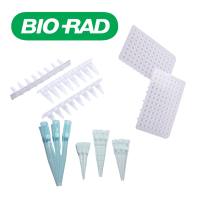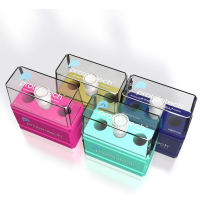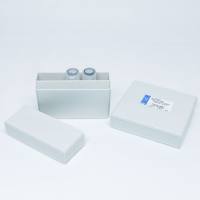Flip-the-Tip: Automated Patch Clamping Based on Glass Electrodes
互联网
745
A conventional borosilicate glass patch pipette is glued into a plastic jacket, forming the entity of a FlipTip�
. One or two three-channel modules of recording tip sockets are mounted on a liquid handler platform to take up FlipTips.
The tip sockets are connected to preamplifiers (HEKA) and to a suction system. The inner chamber of the tip sockets is filled
with intracellular solution (IS), and FlipTips are prefilled with extracellular solution (ES) immediately before use. The
FlipTips are then inserted into the recording tip sockets, and suspended cells are taken out of a cell hotel and dispensed
into the open back of the FlipTips. Simply by gravity, the cells move down toward the end of the pipette. Continuous gentle
suction draws a single cell into the very end of the tip, forming a classical GigaSeal of 1-5GΩ. Stronger suction pulses are
then applied to establish the open whole-cell configuration. Under voltage-clamp conditions, the response of an ion channel
is measured simultaneously in three to six recording sockets. Alternatively, the perforated patch method is used with Amphoterecine
B as the pore-forming agent. Compound delivery is accomplished with a fused silica quartz pipette through the open back of
the FlipTip directly onto the cell. All these tasks are performed automatically and completely unattended by the Flyscreen�
8500 automated patch-clamp robot. A data throughput of several hundred data points per day can be accomplished with the system.









